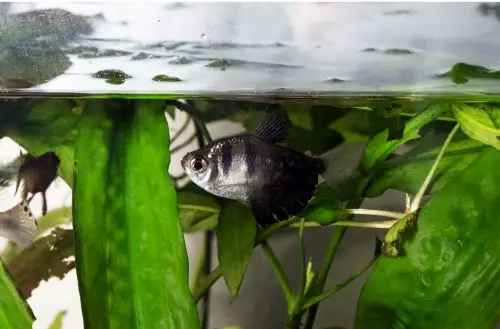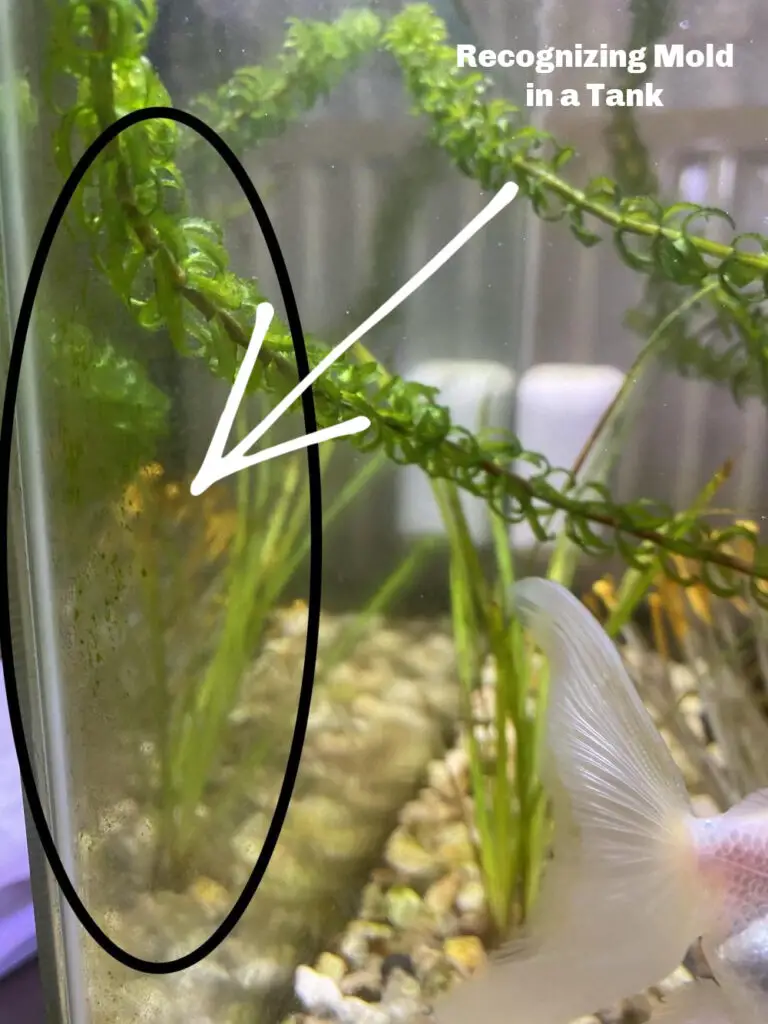Are you worried about black mold spreading in your aquarium and harming your fish? Don’t worry, you’re not alone. Black mold is a common problem for many aquarium owners, but it can be easily remedied with the right approach.
In this guide, we’ll take you through the steps to safely and effectively get rid of black mold in your aquarium. From identifying the cause of the mold to implementing preventive measures, you’ll learn everything you need to know to keep your aquarium clean and healthy for your fish. So, let’s dive in and tackle this problem together!
- Remove any infected plants or decorations from the tank.
- Use a scraper to remove any visible mold from the tank walls and gravel.
- Do a partial water change, replacing at least 25% of the water with fresh, clean water.
- Add aquarium-safe mold remover to the tank and follow the instructions carefully.
- Monitor the tank closely and repeat the process if necessary.

How to Get Rid of Black Mold in Your Aquarium?
If you’re a fish enthusiast, you know how important it is to keep your aquarium clean and healthy. However, one of the most common problems aquarium owners face is the growth of black mold. Black mold not only looks unsightly, but it can also be harmful to your fish and aquatic plants. In this guide, we’ll show you how to get rid of black mold in your aquarium and keep it from coming back.
Identify the Source of the Problem
Before you start cleaning your aquarium, it’s important to identify the source of the black mold. Black mold can grow in aquariums due to a variety of reasons, such as too much light exposure or an imbalanced water chemistry. It’s important to address the root of the problem to prevent the mold from coming back.
To determine the cause of the black mold, start by checking the lighting in your aquarium. If your aquarium is exposed to too much direct sunlight, it can cause algae and mold growth. Consider moving your aquarium to a location with less direct sunlight or adding a UV sterilizer to your aquarium’s filtration system.
Another cause of black mold in aquariums is an imbalanced water chemistry. Test your aquarium’s water parameters and adjust them as needed to maintain a healthy environment for your fish and plants. Make sure to keep up with regular water changes to prevent buildup of harmful substances.
Clean Your Aquarium
Once you have identified the source of the black mold, it’s time to start cleaning your aquarium. Begin by removing any affected plants or decorations and cleaning them with a solution of water and white vinegar. Scrub the affected areas of the aquarium with a soft brush or sponge and rinse thoroughly.
Next, perform a thorough water change of at least 25% of the aquarium’s volume. Use a gravel vacuum to remove any debris or waste from the substrate. Consider adding activated carbon or a phosphate remover to your aquarium’s filter to help remove any remaining contaminants.
Prevent Future Growth
To prevent black mold from coming back, it’s important to maintain a clean and healthy aquarium environment. Keep up with regular water changes and cleaning of your aquarium’s filter and equipment. Avoid overfeeding your fish and make sure to remove any uneaten food from the aquarium to prevent buildup of organic waste.
Consider adding a UV sterilizer to your aquarium’s filtration system to help control algae and mold growth. Use a timer to regulate the amount of light your aquarium receives each day and avoid overexposure to direct sunlight.
Benefits of Maintaining a Clean Aquarium
Maintaining a clean and healthy aquarium not only benefits your fish and aquatic plants, but it also benefits you as the owner. A clean aquarium is visually appealing and provides a relaxing and enjoyable environment to observe your fish. Additionally, a healthy aquarium helps to prevent the spread of diseases and can extend the lifespan of your fish.
Conclusion
Black mold in your aquarium can be a frustrating and unsightly problem. However, with proper identification and cleaning, you can get rid of black mold and prevent it from coming back. Remember to maintain a clean and healthy environment for your fish and plants to thrive. With these tips, you’ll be on your way to a beautiful and healthy aquarium.
Frequently Asked Questions
Black mold in an aquarium can be a serious problem for the health of your fish and plants. Here are some frequently asked questions and answers on how to get rid of black mold in your aquarium.
What causes black mold in an aquarium?
Black mold in an aquarium is caused by an excess of organic matter in the water, such as fish waste, uneaten food, and dead plants. The mold thrives in warm and moist conditions and can spread quickly if not treated promptly.
To prevent black mold from growing in your aquarium, it is essential to maintain good water quality by regularly cleaning the tank and removing any debris or uneaten food. Proper filtration and aeration can also help to prevent the buildup of organic matter in the water.
How do I know if my aquarium has black mold?
The most common sign of black mold in an aquarium is the appearance of black or dark green spots on the walls, substrate, or decorations. The mold can also cause a foul odor and may make the water appear cloudy or discolored.
If you suspect that your aquarium has black mold, it is essential to take immediate action to prevent the mold from spreading and harming your fish and plants.
What are some natural remedies for getting rid of black mold in an aquarium?
There are several natural remedies that can help to get rid of black mold in an aquarium. One of the most effective is to add live plants to the tank, which can help to absorb excess nutrients and reduce the buildup of organic matter.
You can also add vinegar or hydrogen peroxide to the water in small quantities to help kill the mold. However, it is important to avoid using harsh chemicals or cleaners, as these can be harmful to your fish and plants.
Should I remove my fish and plants from the aquarium when treating black mold?
It is generally not necessary to remove your fish and plants from the aquarium when treating black mold, as long as you use natural remedies and avoid harsh chemicals. However, if the mold is widespread and difficult to treat, it may be necessary to temporarily relocate your fish and plants to another tank until the problem is resolved.
Always monitor your fish and plants closely during and after treatment to ensure that they are healthy and thriving.
How can I prevent black mold from returning in my aquarium?
The best way to prevent black mold from returning in your aquarium is to maintain good water quality and cleanliness. This includes regularly cleaning the tank, removing debris and uneaten food, and monitoring the water chemistry and temperature.
You can also consider adding a UV sterilizer or other filtration system to help keep the water clean and reduce the buildup of organic matter. Finally, be sure to feed your fish in moderation and avoid overstocking the tank, as this can contribute to the buildup of waste and nutrients in the water.

How to get rid of BLACK ALGAE FAST!
In conclusion, getting rid of black mold in your aquarium may seem like a daunting task, but it can be accomplished with the right tools and techniques. By following the steps outlined in this guide, you can ensure that your fish and plants are safe and healthy, and that your aquarium remains a beautiful and enjoyable addition to your home.
First, it is important to identify the source of the black mold and remove any contaminated items from the aquarium. Next, you should clean the tank thoroughly, using a solution of vinegar and water or a commercial aquarium cleaner. Finally, you can take steps to prevent black mold from returning, such as maintaining proper water quality and reducing the amount of organic matter in the tank.
By taking these steps and staying vigilant about the health of your aquarium, you can ensure that your fish and plants thrive, and that your aquarium remains a beautiful and enjoyable addition to your home for years to come. So don’t let black mold get you down – with a little effort and care, you can keep your aquarium clean and healthy for all to enjoy.
